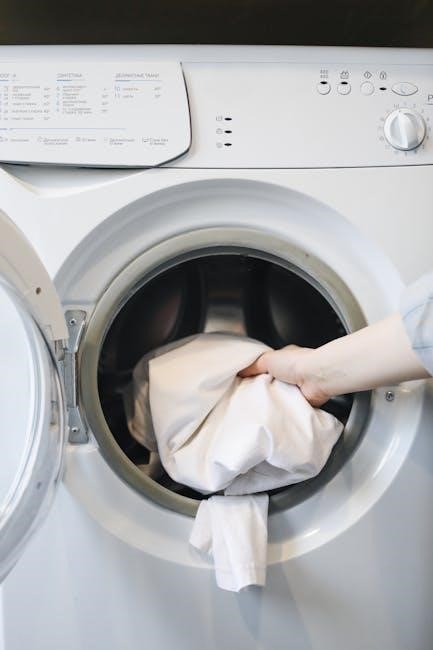Polk Soundbar Manual: A Comprehensive Guide
This guide serves as your central hub for all things related to your
Polk soundbar. We aim to provide easy access to manuals, troubleshooting
tips, and information about connecting and optimizing your audio experience.
Finding Your Polk Soundbar Manual
Locating the correct manual for your specific Polk soundbar model is the
first step to maximizing its potential. If you’ve misplaced the physical
copy, don’t worry! Many resources are available online. Start by visiting
the Polk Audio website and navigating to the “Support” or “Downloads”
section. Here, you can typically search for your model number to find a
digital version of the manual in PDF format.
Alternatively, several websites specialize in hosting user manuals for
various electronic devices. A simple web search for “Polk soundbar manual”
followed by your specific model number should yield relevant results. Ensure
that you download the manual from a reputable source to avoid potential
security risks. These manuals contain valuable information about
connections, settings, troubleshooting, and advanced features.
Popular Polk Soundbar Models and Manual Availability
Polk Audio offers a diverse range of soundbars to suit various needs and
budgets. Several models have gained popularity for their performance and
features. Finding the manual for your specific model is crucial for proper
setup and troubleshooting. This section highlights some popular Polk
soundbar models and provides guidance on accessing their respective manuals.
Commonly sought-after models include the Polk MagniFi Mini, known for its
compact size and impressive sound, the Polk Signa S1, a budget-friendly
option, and the Polk MagniFi 2, which offers enhanced features and
performance. The Polk React Sound Bar is also a popular choice. Manuals for
these and other models are generally available on the Polk Audio website or
through dedicated user manual databases online.
Polk MagniFi Mini
The Polk MagniFi Mini is a compact soundbar system renowned for delivering
room-filling sound despite its small size. It often includes a wireless
subwoofer, enhancing the bass response for a more immersive audio
experience. Finding the correct manual for the MagniFi Mini is important
for understanding its features, such as Bluetooth pairing and adjusting
sound settings.
The manual typically provides instructions on connecting the soundbar to your
TV, pairing the subwoofer, and using the remote control. It also covers
troubleshooting common issues like Bluetooth connectivity problems or sound
distortion. The manual will detail the functions of the buttons located on
the soundbar or remote. If you lose your physical manual, check the Polk
website.
Polk Signa S1
The Polk Signa S1 is a budget-friendly soundbar designed to improve your TV’s
audio quality. Its slim profile allows for easy placement in front of your
TV without obstructing the screen. The user manual is essential for
understanding the Signa S1’s basic functions and setup process. The manual
typically includes instructions on connecting the soundbar to your TV using
optical or RCA cables.
It also provides guidance on using the remote control to adjust volume and
select different sound modes. The Signa S1’s manual often contains
troubleshooting steps for common issues such as no sound or distorted audio.
If you’re experiencing difficulties with your Signa S1, consult the manual
for possible solutions. In case of a lost manual, Polk’s website can provide
a digital version.
Polk MagniFi 2
The Polk MagniFi 2 soundbar is designed to deliver an enhanced home theater
experience. Its corresponding manual offers comprehensive instructions for
setup, operation, and troubleshooting. The manual details connecting the
soundbar to your TV and other devices, often using HDMI ARC for simplified
control. It also covers connecting the included wireless subwoofer for deeper
bass.
The MagniFi 2 manual explains the various sound modes and settings, allowing
you to customize the audio to your preferences. Voice Adjust technology, a
key feature, is explained in detail, highlighting its ability to improve
dialog clarity. In case of problems, the manual provides troubleshooting
steps, including solutions for subwoofer connectivity issues and remote
control problems. Refer to the manual for optimal performance.
Polk React Sound Bar
The Polk React Sound Bar manual provides detailed instructions for setting up
and using this voice-controlled soundbar. The manual offers guidance on
connecting the soundbar to your TV via HDMI ARC or optical connections.
It also outlines the process for pairing the React with other devices via
Bluetooth. The React’s integration with Amazon Alexa is a key feature, and
the manual explains how to set up and use voice commands.
The manual provides instructions on adjusting the sound settings.
Troubleshooting steps address common issues. For example, issues related to
Alexa connectivity or sound distortion. Resetting the soundbar to factory
settings is also covered. Users can find information about wall mounting and
optimizing the soundbar for different room sizes. Refer to the manual for
the most accurate and up-to-date information.

Connecting and Pairing
This section covers essential steps for connecting your Polk soundbar to your
TV and other devices. It also provides guidance on pairing your soundbar
with Bluetooth devices;
Bluetooth Pairing Instructions
To connect your device via Bluetooth, first, press the Bluetooth button on
your Polk soundbar or remote; the display should show “BT READY TO PAIR”.
Next, navigate to the Bluetooth settings on your device (phone, tablet, etc.)
and select your Polk soundbar from the available devices. It may appear as
“Polk MagniFi Mini AX” or a similar name. Once selected, your device will
connect, and the soundbar display should show “BT CONNECTED”. You only need
to pair your device once. The soundbar can usually store up to eight
Bluetooth devices. If connection fails, ensure no other devices are actively
connected and repeat the process.
Subwoofer Connection Troubleshooting
Experiencing issues with your Polk soundbar subwoofer connection? First,
ensure both the soundbar and subwoofer are powered on. If the subwoofer
isn’t connecting, the LED indicator on the back may be flashing. To
re-establish the connection, try these steps: First, power off both the
soundbar and subwoofer, then power them back on. If the connection still
fails, consult your manual for specific pairing instructions, or repeat
pairing process. The lights will stop flashing when the soundbar and
subwoofer connect. If the soundbar and subwoofer fail to connect, the first
and second LEDs will flash together 5 times. Repeat steps above to
establish a connection. Make sure TV internal speakers are disabled.

Installation and Setup
Setting up your Polk soundbar involves physical installation, connecting to
your TV, and configuring the remote. Follow the instructions to optimize
your home audio experience.
Wall Mounting Instructions
To wall mount your Polk soundbar, first determine the desired location,
ensuring it’s near a power outlet and at an optimal listening height. Use
a level to mark the wall accurately. Securely attach the included wall
mount spacers to the back of the soundbar; these spacers create necessary
space for cable management between the soundbar and the wall.
Using the provided template, mark the drilling locations on the wall,
ensuring alignment. Drill pilot holes and insert appropriate wall anchors
based on your wall type. Mount the wall brackets securely to the wall using
screws. Carefully hang the soundbar onto the mounted brackets, ensuring it
is stable and level. Conceal the cords for a clean, aesthetic finish.
Soundbar and TV Connection Options
Connecting your Polk soundbar to your TV offers several options for
optimal audio performance. The most common connection is via HDMI ARC
(Audio Return Channel), which allows audio to transmit from the TV to the
soundbar using a single HDMI cable. Ensure your TV supports ARC and enable
the corresponding setting in your TV’s menu.
Alternatively, you can use an optical cable for digital audio transfer.
Connect one end of the optical cable to the TV’s optical output and the
other end to the soundbar’s optical input. Another option is using RCA
cables; however, this provides analog audio, which may not be as high
quality as HDMI ARC or optical. Select the appropriate input on your
soundbar to match your chosen connection method.
Using the Remote Control
The Polk soundbar remote control provides convenient access to various
functions and settings. The power button turns the soundbar on or off,
while the volume buttons adjust the audio level. A mute button silences the
sound instantly. Input selection buttons allow you to switch between
different audio sources connected to the soundbar, such as HDMI, optical,
or Bluetooth.
Dedicated buttons might be available for specific sound modes like movie,
music, or night mode, optimizing the audio for different content. Some
remotes also include bass and treble adjustment controls for customizing
the sound to your preference. Additionally, Bluetooth pairing buttons
initiate the Bluetooth connection process with your mobile devices.
Familiarize yourself with the remote layout to effectively control your
Polk soundbar.

Troubleshooting
Encountering issues with your Polk soundbar? This section provides solutions
to common problems, including connectivity issues, audio distortion, and
remote control malfunctions, ensuring smooth operation.
Factory Reset Procedure
If your Polk soundbar is experiencing persistent issues, a factory reset can
often resolve them by restoring the device to its original settings. The
process typically involves pressing and holding a combination of buttons on
the soundbar or remote. Consult your specific model’s manual for precise
instructions, as button combinations may vary.
Before proceeding, be aware that a factory reset will erase all custom
settings, including Wi-Fi passwords and paired devices. After the reset,
you’ll need to reconfigure your soundbar from scratch. If you’re unsure
about performing a factory reset, consider contacting Polk Audio support for
assistance. Remember to consult your user manual for detailed instructions
specific to your Polk soundbar model.
Subwoofer Connection Issues
Experiencing problems with your Polk soundbar’s subwoofer connection? First,
ensure both the soundbar and subwoofer are powered on. Check the physical
connection between the devices if applicable, ensuring cables are securely
plugged in. Wireless subwoofers require pairing; consult your manual for
pairing instructions, which may involve pressing a button on both the
soundbar and subwoofer.
If the connection is still unstable, try moving the subwoofer closer to the
soundbar to minimize interference. Other electronic devices can sometimes
disrupt the wireless signal. If issues persist, a factory reset of both the
soundbar and subwoofer might be necessary. Again, refer to the user manual
for specific instructions on your Polk model.

Key Features and Technologies
Polk soundbars offer innovative features like Voice Adjust technology for
crystal-clear dialogue and Dolby Digital decoding for immersive audio. Explore
these technologies in detail to maximize your soundbar’s performance.
Voice Adjust Technology
Polk’s exclusive Voice Adjust technology is a standout feature, allowing users
to customize voice levels for enhanced clarity. This technology works in
combination with Dolby Digital Decoding to improve sound quality and reduce
voice delays. It allows you to independently control voice levels.
With Voice Adjust, you can raise the center channel volume without affecting
other channels, ensuring clear dialogue even during intense action sequences.
This feature is particularly useful for movies and TV shows where dialogue
can be easily lost in the mix.
By prioritizing voice clarity, Voice Adjust technology helps eliminate the
need to constantly adjust the volume. Experience clearer dialogue and more
immersive audio with Polk’s innovative Voice Adjust technology.
Dolby Digital Decoding
Dolby Digital Decoding is a crucial feature that enhances the audio
experience by delivering high-quality, immersive sound. This technology
decodes Dolby Digital audio signals, allowing the soundbar to reproduce
multi-channel audio with clarity and precision. Dolby Digital Decoding works
in combination with Polk’s exclusive Voice Adjust technology.
This decoding process ensures that you hear every detail in your favorite
movies, TV shows, and games. By supporting Dolby Digital, Polk soundbars
create a more realistic and engaging soundstage.
Dolby Digital Decoding enables the soundbar to process audio signals
efficiently. It transforms standard audio into a dynamic and immersive
sound experience. Dolby Digital Decoding also improves sound quality and
reduces voice delays. Immerse yourself in a world of rich, detailed sound
with Dolby Digital Decoding.





